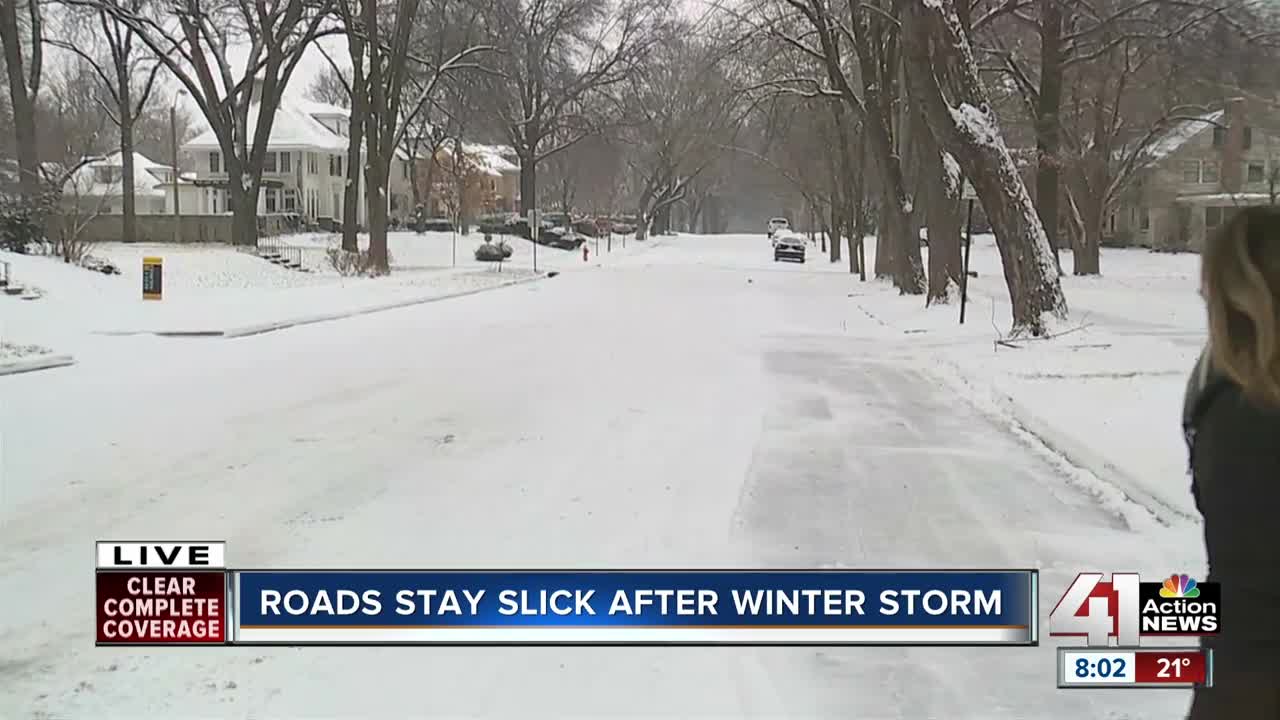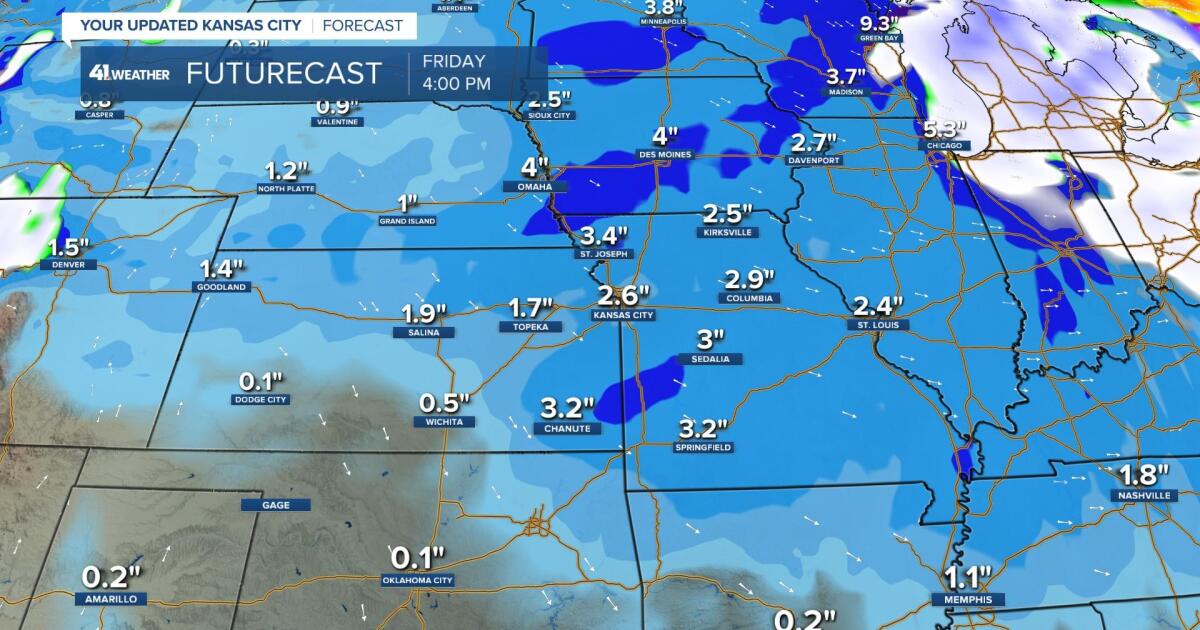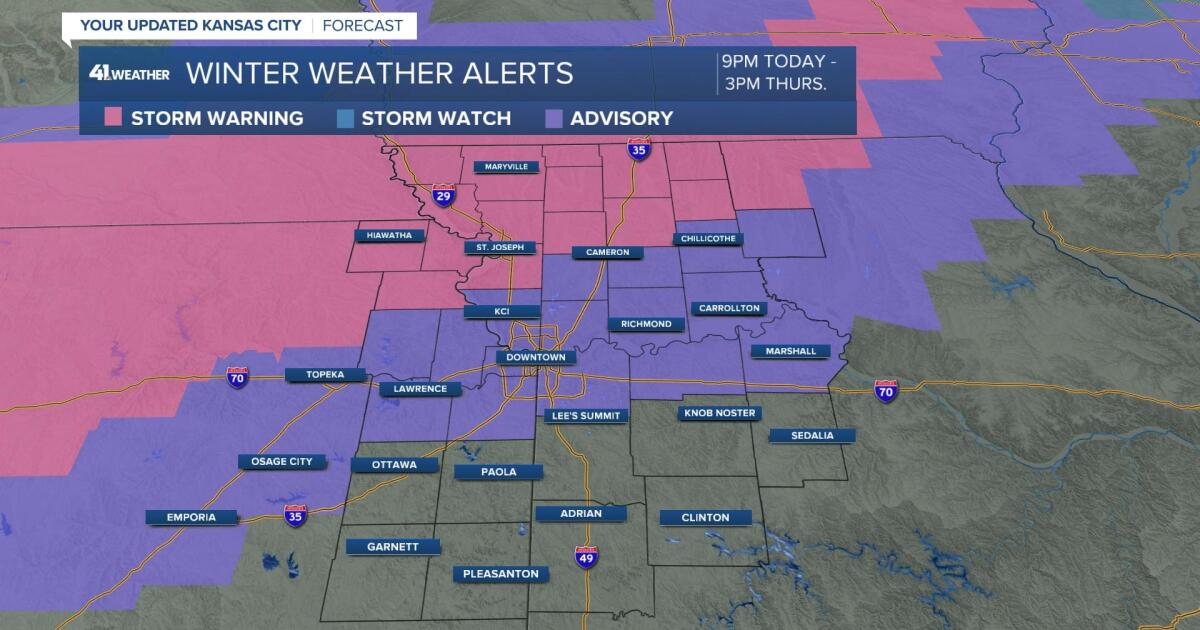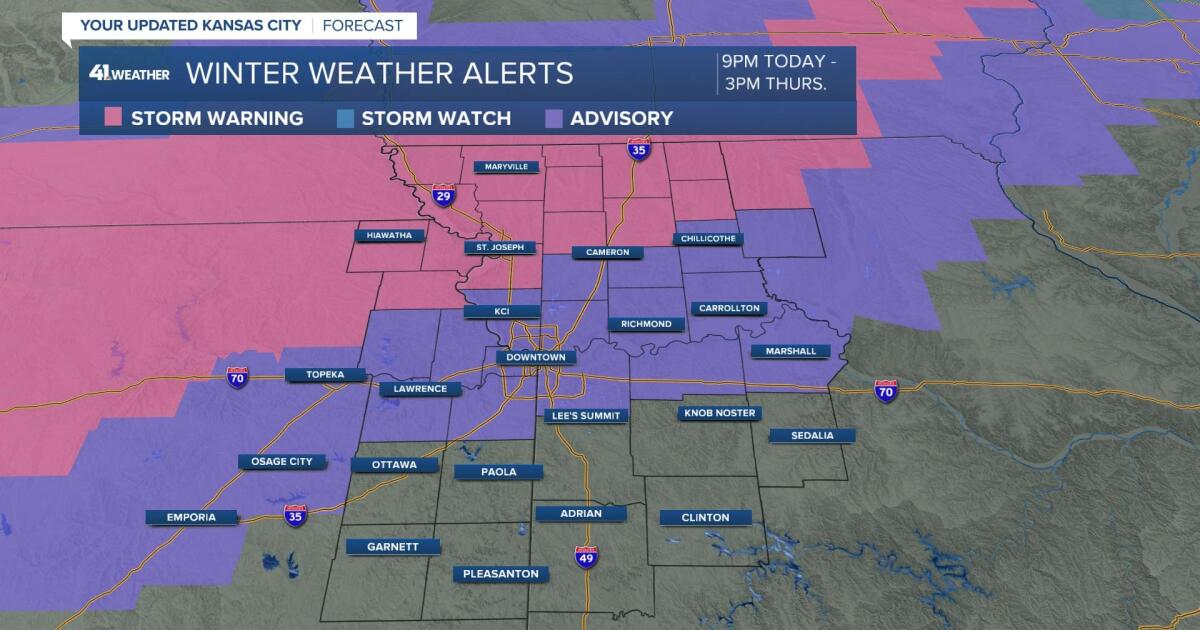Winter storm warning issued for Kansas City, as weekend travel to the area faces significant disruption. This impending blizzard promises a serious challenge to transportation, safety, and the local economy. We’ll explore the potential impact on air and road travel, crucial safety precautions, and the economic consequences of this severe weather event. We’ll also delve into community preparedness and offer a historical comparison to past storms, providing a comprehensive understanding of this developing situation.
The Artikel details the projected storm path, including snowfall, wind, and ice accumulation. We’ll examine the effects on various transportation modes, offering advice for safe travel during the storm and outlining steps for community-wide preparedness. The economic impact on businesses and supply chains will also be addressed, painting a complete picture of the challenges Kansas City faces.
Winter Storm Warning: Impacts on Kansas City
A winter storm warning has been issued for Kansas City, prompting concerns about weekend travel and potential disruptions across various sectors. This article details the expected impacts on transportation, safety precautions, economic consequences, community response, a visual representation of the storm’s path, and a historical comparison with similar events.
Transportation Disruptions
The impending winter storm poses significant challenges to various transportation modes in Kansas City. Expect widespread delays and cancellations across air, road, and public transportation systems.
With a winter storm warning issued for Kansas City, weekend travel plans are looking dicey. It’s a tough situation, reminding me of Jermaine Burton’s woes; check out this article about him Jermaine Burton left home by Bengals, gets eviction notice – his troubles are certainly a storm of a different kind. Hopefully, the weather in Kansas City clears up soon, allowing for safer travel.
| Mode of Transportation | Potential Disruptions | Safety Concerns | Mitigation Strategies |
|---|---|---|---|
| Air Travel | Flight cancellations and significant delays; potential ground stops. | Risk of being stranded at airports; exposure to cold temperatures. | Check flight status frequently; allow extra travel time; pack warm clothing. |
| Road Travel | Highway closures, hazardous driving conditions (black ice, snow accumulation, reduced visibility); traffic jams. | Risk of accidents; vehicle breakdowns; hypothermia. | Avoid unnecessary travel; check road conditions before departure; carry emergency kit; drive slowly and cautiously. |
| Public Transportation | Delays or cancellations of bus and rail services; potential disruptions to schedules. | Exposure to cold temperatures at bus stops and stations; potential overcrowding. | Check service alerts before traveling; allow extra time; dress warmly. |
Safety Precautions and Advisories

Prioritizing safety during a winter storm is crucial. Taking proactive measures before, during, and after the storm can significantly reduce risks.
- Before the storm: Prepare an emergency kit (food, water, blankets, medications), charge electronic devices, and inform family/friends of travel plans.
- During the storm: Avoid unnecessary travel; stay informed about weather updates; dress in layers; check on vulnerable neighbors.
- After the storm: Check for power outages; be cautious of downed power lines; clear snow from walkways; report any damage to authorities.
Ensure your vehicle is winter-ready: check tire pressure, battery, fluids, and wipers; keep a full tank of gas; carry sand or kitty litter for traction.
Economic Impacts, Winter storm warning issued for Kansas City, as weekend travel to

The winter storm’s economic impact on Kansas City will be multifaceted, affecting various sectors and potentially leading to significant losses.
| Sector | Potential Economic Impact |
|---|---|
| Retail and Hospitality | Reduced customer traffic; business closures; lost revenue. |
| Transportation and Logistics | Supply chain disruptions; delays in deliveries; increased transportation costs. |
| Construction | Work stoppages; project delays; increased repair costs. |
Community Response and Preparedness

Community preparedness and response are vital in mitigating the impact of winter storms. Collaboration between residents, emergency services, and local authorities ensures effective management of the situation.
Examples of community initiatives include: neighborly check-ins, volunteer snow removal efforts, and the establishment of warming centers. Emergency services will provide crucial support, including search and rescue operations, and road clearing. Residents can support their neighbors by offering assistance, sharing resources, and checking in on vulnerable individuals.
Visual Representation of the Storm’s Path
The winter storm is projected to impact Kansas City with heavy snowfall, beginning Friday evening and lasting through Sunday. Snow accumulation is expected to reach 6-12 inches in some areas, with higher amounts possible in certain locations. Wind gusts could reach up to 30 mph, leading to blizzard conditions in open areas. The potential for significant ice accumulation exists, especially in areas where freezing rain is forecast.
An image depicting the storm’s impact might show downed power lines, blocked roads, and snow-covered vehicles. The most severe impacts are expected in the northern and eastern parts of the metro area.
With a winter storm warning issued for Kansas City, weekend travel plans are looking dicey. It’s a good reminder to prioritize health, just like Gloria Hunniford did after receiving a stark warning from her doctor, as detailed in this article: Loose Women’s Gloria Hunniford shares how stark doctor’s warning. So, before you hit the road, check the weather forecast and maybe rethink those Kansas City weekend plans if the storm looks serious.
Historical Context and Comparisons
Comparing the current storm with past winter storms in Kansas City reveals trends in weather patterns and community response. For example, the 2011 blizzard resulted in widespread power outages and significant travel disruptions, highlighting the vulnerability of the city to severe winter weather. This current storm, while potentially severe, benefits from improved forecasting technology and emergency response systems, allowing for more effective preparation and mitigation.
| Characteristic | 2011 Blizzard | Current Storm (Projected) |
|---|---|---|
| Snow Accumulation | 18-24 inches in some areas | 6-12 inches (with potential for higher amounts) |
| Wind Speeds | Sustained winds of 20-30 mph with higher gusts | Gusts up to 30 mph |
| Duration | Multiple days | Approximately 48 hours |
Closure: Winter Storm Warning Issued For Kansas City, As Weekend Travel To

This winter storm poses a significant threat to Kansas City, impacting travel, safety, and the local economy. By understanding the potential disruptions and implementing the necessary safety precautions, both individuals and the community can mitigate the impact of this severe weather event. Staying informed about weather updates and following official advisories are crucial. Remembering the lessons learned from past storms, Kansas City can effectively navigate this challenge and ensure the safety and well-being of its residents.
With a winter storm warning issued for Kansas City, weekend travel plans are looking dicey. If you’re stuck at home and thinking about a career change, maybe now’s the time to check out some surgical tech programs near me and see if that’s a good fit for you. Once the snow melts, you can start your new adventure! So, stay safe and warm during this Kansas City winter storm.
Helpful Answers
What should I do if I’m stranded during the storm?
Stay in your vehicle if possible, conserving fuel. Call emergency services for assistance. If you must leave your vehicle, do so only if you can safely reach shelter. Let someone know your location and intended route before you travel.
How can I prepare my home for the storm?
Stock up on non-perishable food and water. Charge electronic devices. Ensure you have a supply of medications and other essential items. Bring pets indoors. Protect exposed pipes from freezing.
What about power outages?
Have flashlights and extra batteries ready. Know how to safely operate a generator if you have one. Stay away from downed power lines.
